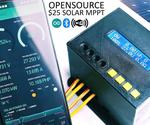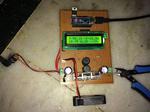Other

“Build a 1kW WiFi MPPT Solar Charge Controller, equipped with phone app datalogging telemetry! (Android & IoS) It is compatible with 80V 30A solar panel setups and all battery chemistries up to 50V. The project is based on an Arduino ESP32 …

“There are many charge controllers available in market. ordinary cheap charge controllers are not efficient to use maximum power from solar Panels. The ones which are efficient, are very costly. So i decided to make my own charge controller which …

